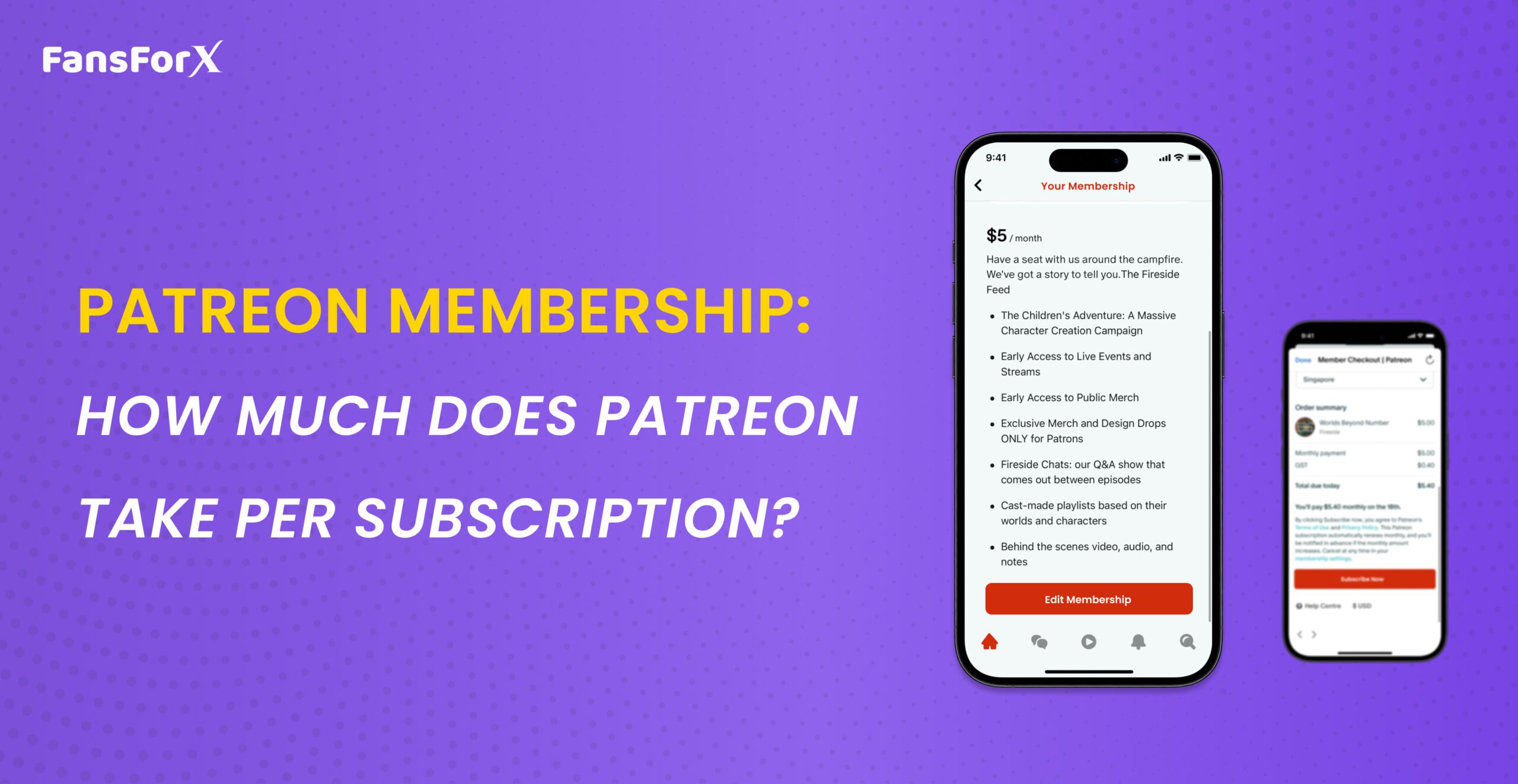
For many creators seeking to monetize their content and build a community, Patreon has become a popular platform. However, understanding the fees associated with Patreon memberships and the portion Patreon takes from subscriptions is crucial. In this guide, we’ll explore the intricacies of Patreon membership fees, providing clarity for creators and supporters.
The Basics of Patreon Membership
Patreon operates on a membership model, enabling creators to offer exclusive content and benefits to their patrons in exchange for financial support. Creators define different tiers of membership, each offering varied perks and content, allowing patrons to choose the level of support they wish to provide.
The Importance of Patreon Membership for Creators
Patreon memberships offer several advantages for creators:
- Sustainable Income: Patreon provides a consistent income stream that creators can rely on, allowing them to support their creative endeavours.
- Direct Support: The platform enables direct support from fans who appreciate and enjoy the creator’s work.
- Community Building: Patreon allows creators to foster a community around their content, engaging directly with their most dedicated supporters.
- Diversification of Revenue: It offers creators an additional revenue source beyond traditional platforms, reducing dependency on advertising or other monetization methods.
How Patreon Membership Fees Work
When patrons subscribe to a creator’s membership tier on Patreon, they are charged a fee according to the tier they choose. Patreon charges patrons the subscription amount plus applicable sales tax. However, the portion of the subscription that Patreon takes is the percentage fee deducted from the creator’s earnings.
Understanding Patreon’s Fee Structure
Patreon’s fee structure for creators is essential to comprehend:
- Platform Fee: Patreon applies a platform fee, typically around 5% to 12% of the creator’s earnings, depending on various factors.
- Payment Processing Fees: In addition to the platform fee, Patreon deducts payment processing fees, which cover the costs associated with processing payments, typically around 2.9% plus $0.30 per successful charge.
- Tier Benefits and Fees: Different membership tiers may incur additional platform fees. Higher-tier benefits or services may result in a higher fee percentage charged by Patreon.
Calculating Patreon’s Deductions
To calculate Patreon’s deductions, let’s consider an example:
Suppose a creator offers a membership tier priced at $10. If Patreon applies a 5% platform fee and payment processing fees of 2.9% plus $0.30 per successful charge, the breakdown would be as follows:
- $10 (subscription amount)
- Platform fee: 5% of $10 = $0.50
- Payment processing fees: 2.9% of $10 + $0.30 = $0.59 + $0.30 = $0.89
- Total deductions by Patreon: $0.50 (platform fee) + $0.89 (payment processing fees) = $1.39
- Earnings for the creator: $10 – $1.39 = $8.61
This exemplifies the typical deductions creators may encounter when patrons subscribe to their memberships on Patreon.
Factors Influencing Patreon Membership Fees
Several factors can influence the total fees that Patreon deducts:
- Platform Fee Variations: Patreon’s platform fee can vary depending on individual agreements, special deals, or adjustments made by Patreon for specific creators or circumstances.
- Payment Method and Location: The payment processing fees can differ based on the payment method used by patrons and their geographical location.
- Additional Service Fees: Different membership tiers might involve additional services or benefits, which could affect the overall fees deducted by Patreon.
Maximising Benefits While Considering Fees
For creators on Patreon, balancing the benefits offered to patrons with the associated fees is essential. Some strategies to maximise benefits while considering fees include:
- Tier Structures: Design membership tiers that offer substantial value to patrons without significantly impacting the fees deducted.
- Transparency: Be transparent with patrons about the fees involved, ensuring they understand the breakdown of costs.
- Value-Driven Content: Focus on delivering high-value, exclusive content to patrons, making the subscription worthwhile despite the associated fees.
- Communication: Engage with patrons regularly, demonstrating appreciation for their support, and offering insights into how their contributions impact the content they receive.
FAQs about Patreon Membership Fees
What Percentage Does Patreon Take?
Patreon’s platform fee can range from 5% to 12%, while payment processing fees amount to around 2.9% plus $0.30 per successful charge.
Can Creators Adjust Membership Fees?
Creators have the flexibility to adjust their membership fees for different tiers and can create custom benefits that match the value offered at each tier.
Do Patrons Pay Extra Fees?
Patrons are charged the subscription amount plus applicable sales tax. The fees charged by Patreon to the creator are separate from what patrons pay.
Are There Other Payment Methods with Lower Fees?
Patreon offers various payment methods, and the associated fees may vary. Creators can explore different options to minimize payment processing costs.
Conclusion
Understanding the fees associated with Patreon membership is crucial for both creators and patrons. While Patreon deducts a percentage for its platform fee and payment processing, it’s essential for creators to balance the benefits offered with the fees incurred. By being transparent, providing high-value content, and effectively communicating with patrons, creators can build a sustainable and supportive community on Patreon.
For creators and patrons alike, comprehending the breakdown of Patreon membership fees is vital for establishing a beneficial